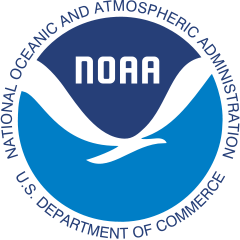This study advances our understanding of the physical processes controlling the dynamics of ice streams – pathways for ice discharge from the interior of ice sheets to surrounding oceans – and the leading source of uncertainty in projections of global sea level rise in the 21st century.
Read More…
GFDL Research Highlights
The authors compared observations to model results, using 23 different CMIP5 models to simulate internal climate variability and the response to anthropogenic and natural forcing. The models were used to investigate the causes of the unusual warmth during March-May 2012 that occurred over the eastern U.S. The 20thcentury warming trend that was observed in this region is consistent with the CMIP5 multi-model ensemble results of All-Forcing runs but not consistent with model runs that did not include external forcing. The long-term trends in the models are predominantly due to anthropogenic forcing. Therefore, we interpret the extreme warmth of March-May 2012 over the eastern U.S. as very likely attributable, at least in part, to anthropogenic forcing. The CMIP5 models’ central estimate of the contribution of anthropogenic forcing to the March-May 2012 anomaly is about 35% in terms of magnitude. Moreover, the model results suggest that the risk of a warm anomaly in the eastern U.S. as large as that seen in March-May 2012 has now increased by about a factor of 10 due to long-term climate warming—primarily anthropogenic in origin.
Read More…
Planktonic food web dynamics shape biogeochemical cycles and global patterns of ocean productivity across trophic levels. Primary production alone, for example, is a poor predictor of cross-ecosystem differences in fisheries yields. Predictive capability improves only after consideration of factors such as the number and efficiency of trophic links separating phytoplankton and fish. Limited representation and validation of planktonic food web dynamics within the present generation of Earth System Models limits both their resolution of biogeochemical processes and their utility for assessing climate impacts on living marine resources.
Read More…
Evaluating climate simulations against observational data is a fundamental step in the evaluation and eventual improvement of models. Models can also help test our understanding of the causes of past variations of climate seen in the historical record. This analysis shows how current climate models, including those developed by NOAA, compare with observations in terms of their regional surface temperature trends since 1901.
Read More…
The impacts of climate change on the North America-North Atlantic-Europe sector are studied using a coupled general circulation model (CM3) and a high-resolution atmosphere-only model (HiRAM), both developed at the Geophysical Fluid Dynamics Laboratory. Long-term changes in surface temperature, precipitation and storminess patterns over Europe and the North Atlantic are projected.
Read More…
This study investigates the impact of the late 20th century increase of anthropogenic aerosols on the onset of the Indian summer monsoon. Aerosols are likely responsible for the observed earlier onset, resulting in enhanced June precipitation over most of India. This shift is preceded by strong aerosol forcing over the Bay of Bengal and Indochina, mostly attributable to the direct effect, resulting in increased atmospheric stability that inhibits the monsoon migration in May.
Read More…
The authors explored the influence of anthropogenic climate change on Atlantic hurricane activity in the 21stcentury, using dynamical climate models. The results of experiments using multi-model climate change scenarios were compared, with one scenario taken from CMIP3 (A1B), and one from CMIP5 (RCP4.5). A significant reduction in the frequency of tropical storms and hurricanes is projected for both CMIP3 and CMIP5 ensembles. However, the authors found significantly increased frequency of category 4 and 5 hurricanes in experiments with the CMIP3 ensemble. Experiments with the CMIP5 ensemble showed a smaller increase in the strongest storms. In addition, tropical cyclone-related rainfall rates, increased significantly–by about 30% in the hurricane inner core (within 50 km of the storm center) with a smaller increase of about 10% for rainfall rate averaged within 200 km to 400 km of the storm center.
Read More…
The authors simulated the response of sea surface temperature (SST) in the Atlantic Hurricane Main Development Region (MDR) to a doubling of CO2, using a cutting-edge global high-resolution coupled model developed at GFDL (CM2.5). This model has been shown to produce a very faithful simulation of the observed seasonal cycle and year-to-year (or interannual) variability in the tropical Atlantic. The skillful representation of Atlantic interannual variability enables the exploration of the response of interannual variability to increasing CO2 – in addition to exploring changes in the average conditions in the Atlantic.
Read More…
Biomass burning is one of the largest sources of trace gases and aerosols in the atmosphere, and has profound influence on tropospheric oxidants and radiative forcing. Using a fully coupled chemistry-climate model (GFDL AM3), the authors found that co-emission of trace gases and aerosol from present-day biomass burning increases the global tropospheric ozone burden by 5.1%, and decreases global mean OH, a major sink for methane, by 6.3%.
Read More…
Future changes in wind-wave patterns have broad implications for ecosystems, as well as the design and operation of coastal, near-and-off-shore industries. Changes in response to global warming may further exacerbate the anticipated vulnerabilities of coastal regions to projected sea-level rise.
Read More…


